
From dropping a glove to falling through a cornice, basic slip-ups can have serious consequences in winter. It's quite possible to make several of these mistakes in the same day, but with the appropriate preparation, skills and gear they all ought to be avoidable. Here's what not to do...
Overestimating your abilities
Or to put it another way, underestimating the challenge. Whether you're flogging through deep snow, picking your way across treacherous icy ground or battling an unexpected headwind, winter conditions can seriously mess with your timing. At this time of year there's not much daylight to fit everything into (see getting benighted, below), so can you really manage that third Munro, still a couple of miles off, or should you play it safe and head for the pub now? Start small and build up to the biggies as you get stronger, fitter and more experienced. And always temper your winter ambitions with a hint of caution, including get-out options in your route panning, in case conditions make the full distance unrealistic.
Getting benighted
When days are so short and nights so very long it's common to begin or end your walk in the dark. That's fine so long as you've intended to be out after nightfall, but what if it catches you unaware? In summer biting off more than you can chew and spending the night out might be embarrassing, but in wild winter conditions it could prove fatal. So you're slower than expected, and find yourself still up high on tricky ground when darkness falls. Now you're going to be slower still. This could be a long night. When planning a winter day allow yourself a far more generous time margin than you would in summer, and try to start earlier in order to be safe down off any tricky ground before nightfall.
For more advice on dealing with the dark see Ten Top Tips for Walking at Night.
Forgetting the spares
Drop a glove in a summit storm and at best you'll have a numb, useless hand; at worst it could be frostbite. It's an easy mistake to make - so easy in fact that you should always go out prepared for it to happen. You may only have two hands, but extra gloves are a winter essential. Two or three backup pairs wouldn't be excessive, since even if you manage not to lose any your original pair are bound to get wet through the day. Ditto hats - and if you make the spare a balaclava then you're well covered for an unplanned benightment. It's a similar story with the head torch. Spare batteries might sound like precaution enough, but how are you going to change them in the dark? You'd feel pretty daft if you dropped or broke your only light, too. There's a simple solution - bring a backup torch. It's worth having an emergency second map too. In addition to the backup bits and bobs, chuck in a bit if duct tape and some cable ties. With only these you can bodge some pretty workable running repairs to all sorts of damaged kit.
Sloppy navigation
Crossing a cliff-ringed plateau in a whiteout; finding a tiny bothy in a very big moor at night; avoiding the aspects of the hill threatened by high avalanche risk - navigation in winter needs particular care because: a) it's often so difficult and b) the consequences of getting it wrong could be very high. Even if you're a habitual GPS user you can't afford to be casual with your map and compass skills.
Check out this basic intro to Navigation in Winter
Not bringing crampons and axe
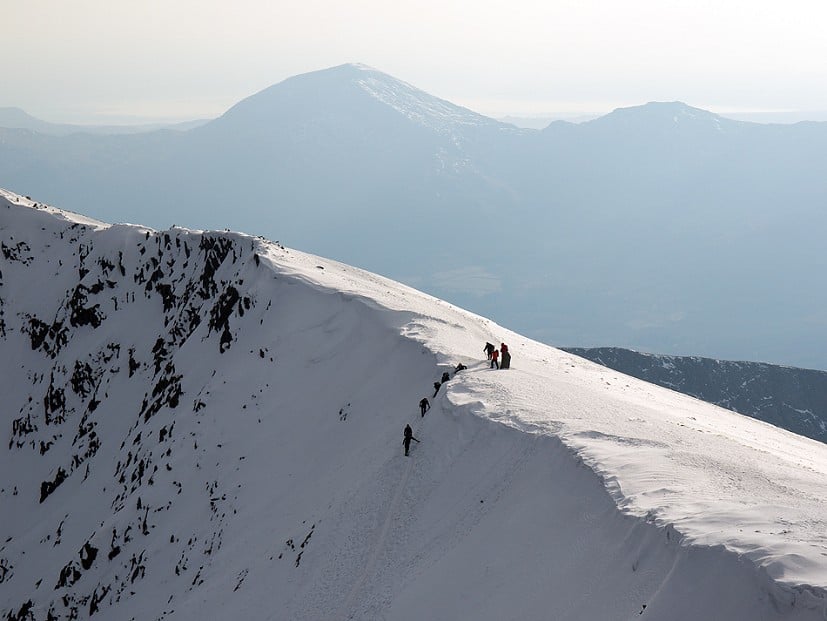
A careless slip, and then a long sickening slide on hard snow: it must be one of the most common accidents in the winter hills, but often avoidable. We've probably all seen them and winced, those ill-equipped walkers tottering around on icy neve slopes without crampons to aid their footing or an axe to check a fall. On fine winter weekends you'll find sketchy ill-equipped groups on all our busiest hills, from Swirral Edge or the top of the Pyg Track to the zigzags on Ben Nevis. Perhaps they simply haven't appreciated the danger they put themselves in, or the world of difference between the friendly valley and the hard-frozen mountaintop. But for regular walkers there's no excuse. Even when the need for crampons and axe looks marginal, better bring them just in case. And as they always say at this point, a basic grasp of how to safely use them is necessary too.
See Essential Winter Skills - Walking in Crampons and Essential Winter Skills - Walking With an Axe
Going without goggles
Winter days so bright that you've gotta wear shades may be the dream, but more often the reality is a spindrift facial. Having your eyeballs sand blasted by a headwind full of hailstones makes it painfully difficult to see where you're heading - clearly a hazard when you're staggering about up big steep mountains, struggling to read a map while trying not to fall off anything. Don't be tempted to leave your ski goggles at home; without them you could be in real trouble.
Not eating or drinking enough
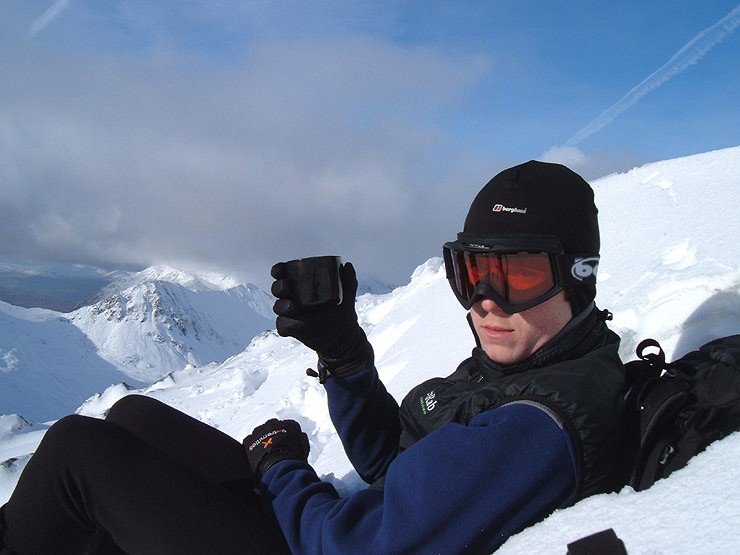
Miles from home in a howling blizzard is not a good time to hit an energy low. You only had a salad last night; you're not big on breakfasts; and your lunchtime sandwich has long gone. Now you're slowing down, getting cold and tiring fast. Out in the back country of the Cairngorms or the Carneddau this could be serious. Few things burn calories faster than wading through the snow with a heavy load, and even when you stop your body will be expending energy just trying to keep warm. On winter walking days forget the diet, and go all out for calories. Make sure you are properly fuelled up beforehand with a massive carb-rich dinner the night before, and a big breakfast too. And on the day carry a lot more high calorie food than you would in summer: Pork pies, peanut butter rolls, jelly babies - it doesn't have to be sophisticated.
When it's freezing outside hydration might not be your first concern, but you'll still be sweating like a ripe cheese in all those winter layers, and breathing the cold dry air. So drink plenty, both beforehand and on the hill. If cold plain water doesn't appeal try a thermos of hot chocolate or warm squash.
Getting too cold
A certain tolerance for discomfort is a given, but don't take things too far. You've got damp; you're tired and hungry. It's windy and you're under-dressed, but you can't be bothered to stop and add a layer. It is all too easy, in such circumstances, for your core body temperature to drop almost un-noticed. Dip below 35 degrees and you've officially got hypothermia, and though symptoms may be mild at first - shivering and lethargy - things can quickly degenerate. If you miss the warning signs of hypothermia, and fail to put on enough warm clothing, it could ultimately prove fatal. It may be a faff, but taking time to manage your temperature is vital. At the first sign of feeling cold put on another layer; if your gloves are wet then swap them for a dry pair; if it's wet or very windy add a waterproof/wind proof shell (and legs) sooner rather than later. In terms of clothing, staying dry and keeping the wind off is half the battle; the other half is insulation. On winter hills always have a big warm duvet jacket to hand, to chuck on over everything else whenever you're stationary. And paradoxically, make sure while you're worrying about keeping warm that you don't accidentally overheat and saturate your under layers with sweat.
For tips on managing the cold see Hypothermia, and How Not to Get It
Ignoring avalanche risk
Avalanches: They don't only happen to other people in other countries. Our wild fluctuations in temperature, wind and snowfall can result in some pretty hairy conditions in the British winter hills. The Scottish Highlands inevitably have the lion's share of avalanches, but by no means a monopoly. It's not just climbers and skiers who should be concerned. Whether through ignorance or complacency, walkers often put themselves at risk too, and serious accidents and fatalities happen all too often. A basic understanding of how avalanches work, and how to avoid them, is vital for all winter hillwalkers. Make sure too that you've a good grasp of what the weather has been doing in your chosen location for several days prior to your trip, and always check the avalanche reports where available - that's the Scottish Avalanche Information Service (SAIS) and the Fell Top Conditions Reports from Lake District Weatherline
Walking on a cornice
Enough said...

- INTERVIEW: Exmoor Coast Traverse - England's Best Kept Mountaineering Secret 10 Apr
- REVIEW: Rab Muon 50L Pack 9 Apr
- REVIEW: Boreal Saurus 2.0 22 Mar
- REVIEW: The Cairngorms & North-East Scotland 1 Mar
- REVIEW: Mountain Equipment Switch Pro Hooded Jacket and Switch Trousers 19 Feb
- Classic Winter - East Ridge of Beinn a' Chaorainn 12 Feb
- REVIEW: Salewa Ortles Ascent Mid GTX Boots 18 Jan
- REVIEW: Patagonia Super Free Alpine Jacket 7 Jan
- REVIEW: Deuter Fox - A Proper Trekking Pack For Kids 27 Dec, 2023
- My Favourite Map: Lochs, Rocks, and a Bad Bog 27 Nov, 2023



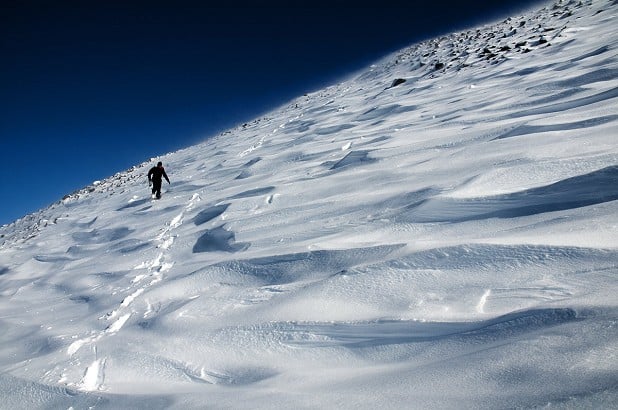
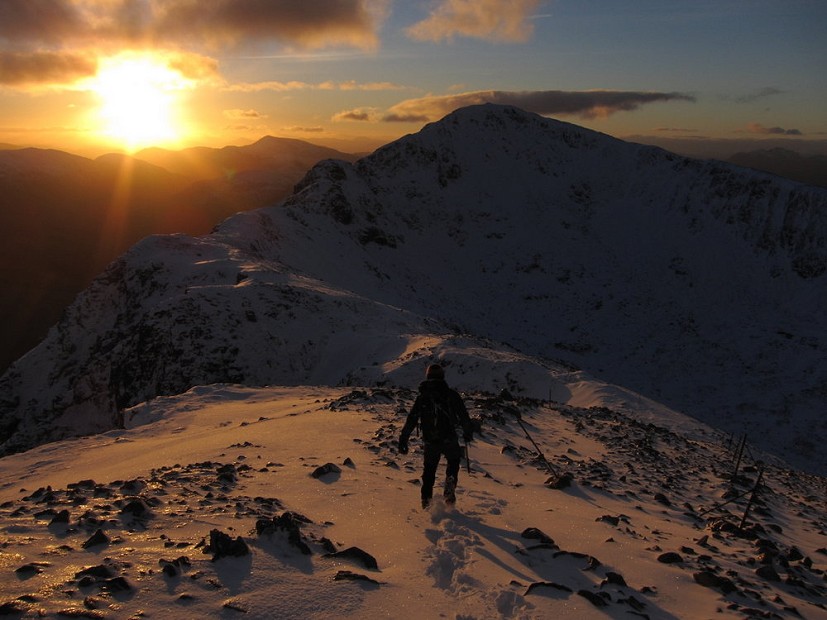
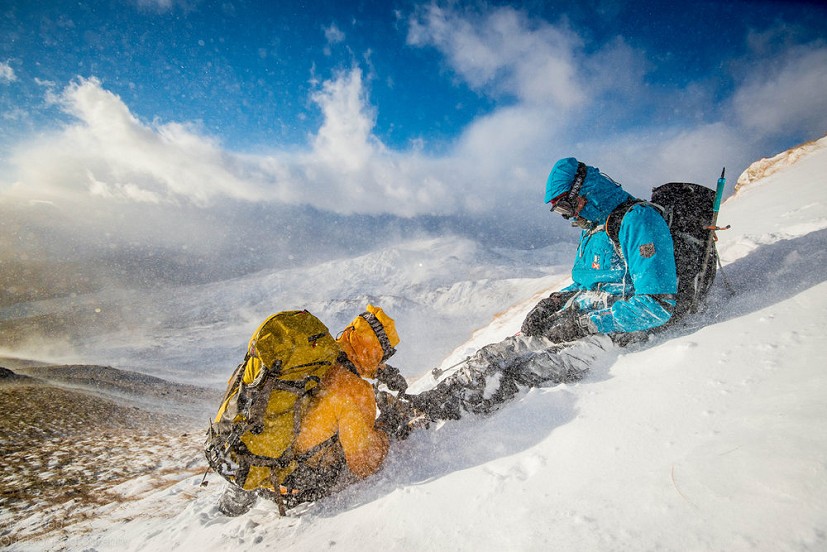
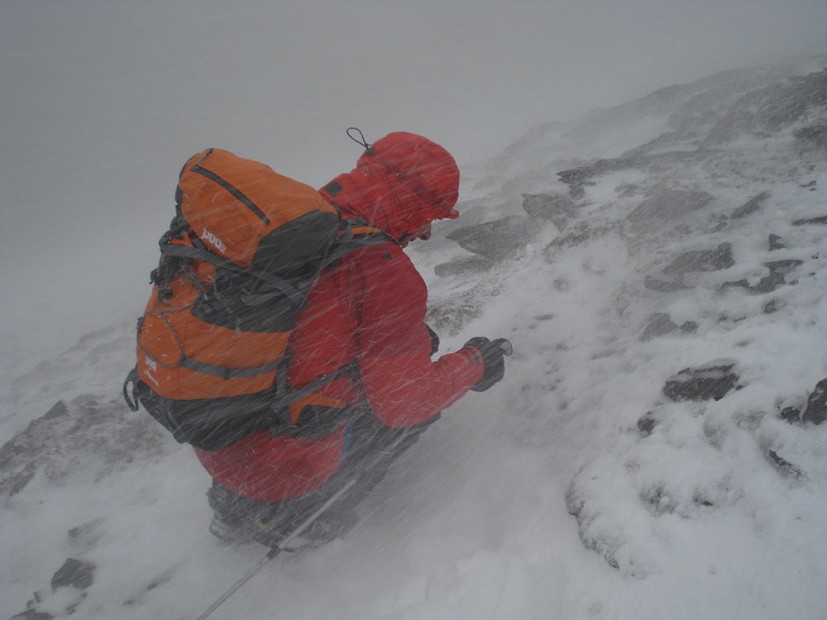
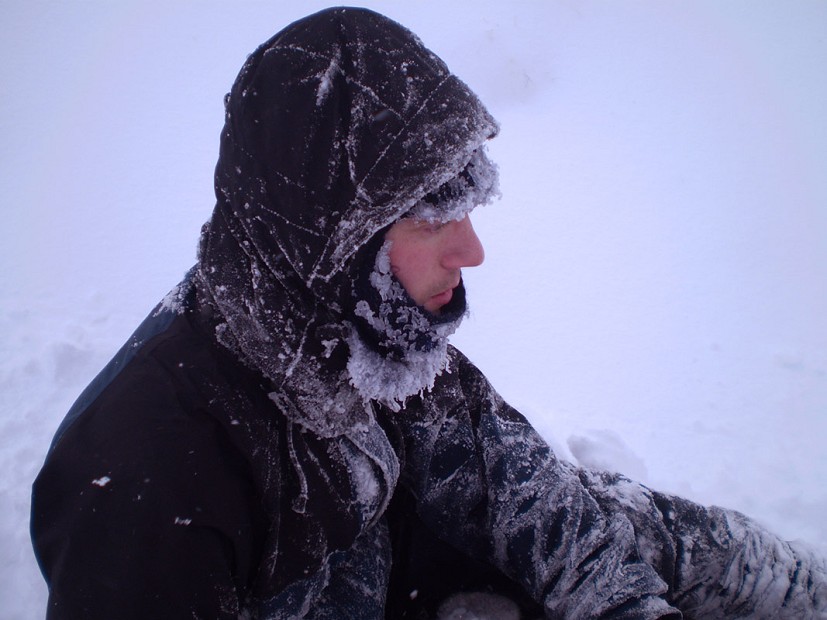
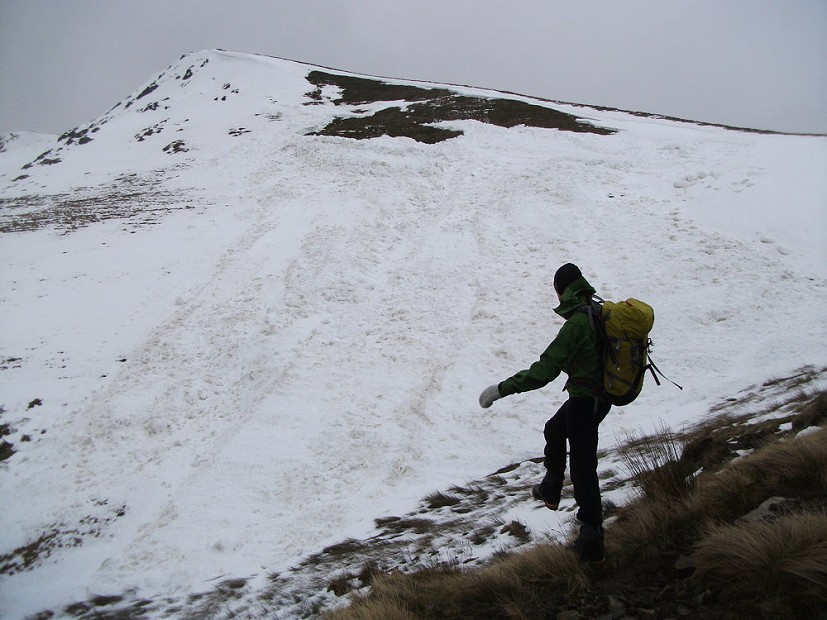

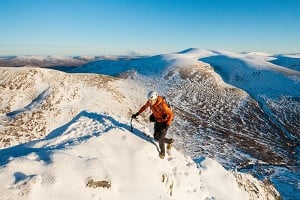
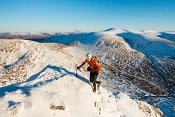
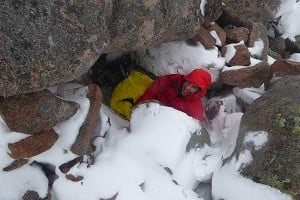



Comments